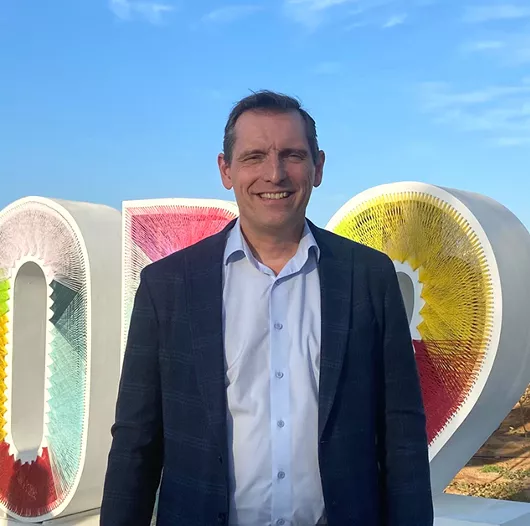Data Center Decarbonization Takes Center Stage In Egypt


Conversations around the topic of net-zero carbon emissions can be tricky.
That’s partly because all too often the phrase is mistakenly interchanged with more dramatic, or at least more complicated measures like carbon removal, reduction, sequestration, and elimination.
But net-zero is a pragmatic approach to reining in our emissions of deadly greenhouse gases (GHGs). It simply calls for removing as much carbon as we emit. It’s a balance. It’s also complicated but it’s a balance, nonetheless.
Actively removing the GHGs spewing from our smokestacks, combustible engines, appliances, data centers, etc., will help humanity halt the steady, global flow of carbon dioxide into the atmosphere. Once this momentum begins, we may begin to focus on even bigger ideas in earnest, like massive carbon sequestering and removal. But we’ll never reach that point without first jamming our emissions into a climate retrograde.
And no stone can be left unturned in the quest for net-zero. Literally every corner of the carbon emitting world must be identified, isolated, and mitigated. For us at Hitachi Vantara, there was no place closer than the data center, an area of the modern business world rife with sustainability opportunities.
For years, we’ve been applying innovative technologies and processes to the challenge to help organizations not merely lower emissions from their data centers, but lower costs as well through greater energy efficiencies and improved business performance. Because, as I wrote in April, decarbonizing the data center is good for the planet, as well as business.
And it begins with assessing the application landscape. For example, simply modernizing the right workloads can help reduce operating system overhead and the infrastructure footprint, and in some cases, provide up to a 50% savings of server capacity. The work can also help organizations tear down data silos to fuel even greater data insights.
In addition to application modernization, eco-friendly infrastructure – systems designed and manufactured with emissions, usage, waste, and recyclability are at the forefront – add to data center decarbonization. And when you consider that more than 80% of “value-chain” CO2 emissions of a storage product are related to its use after it is sold, the entire life cycle of a system, from cradle to grave, is real.
One of Hitachi Vantara’s key partners on the decarbonization is Atos, the global digital solutions and services company based in Paris. Of the myriad industries, services and solutions Atos supports, decarbonization is key. From its in-depth assessments to its MyCO2Compass tool, which digitizes carbon data and links current data to forecasting for better predictability and decision making, organizations around the world are leveraging Atos to accelerate their net zero goals.
“Most customers inherently understand that if you want to reach any targets you need to measure,” said Marc Mosthav, Head of Net Zero Transformation, Digital Platforms, at Atos. “You can set all sorts of targets but unless you start to measure you won't know where you’re coming from, where you are going, and you certainly won't know if you've achieved your targets. Measuring target achievements is also critical for supporting the Science Based Target initiative (SBTi). So we tend to first speak to the need to measure, which is quite connected with the Hitachi Vantara discussion – which is, how to measure the carbon footprint of the IT landscape.”
Our work with Atos over the years has helped so many businesses and organizations around the world. It’s why I was excited to participate at the company’s Tech for Climate Summit 2022, in Sharm El Sheikh, Egypt, this week. Held down the road from the UN’s COP27 annual Conference on Climate Change, this two-day conference convened customers, partners, and government officials to learn the very latest on how decarbonization efforts are working, and services and solutions are available.
From the attention of COP27, to our gathering for the Atos summit, it was clear that both public and private sectors are taking sustainability seriously and are eager to learn about new ways and innovations to achieve net zero goals.
For my part, I was met with questions such as, “Why is decarbonization driving investment in the data center of the future?” “How can you achieve your sustainability KPIs with eco-friendly technology?” And, “Is it true that sustainability is a cost-savings activity?” And much more.
The fight against climate change is the imperative of our time. As our CEO, Gajen Kandiah, aptly said in his story this week, “There’s power in partnership and COP27 calls for urgent, intense collaboration.”
I couldn’t agree more. The time for our collective response is now. Together, we have the ability – and responsibility – to drive a new net-zero economy.

Tom has +30 years' experience in data center modernization, from compute and data infrastructure to hybrid and multicloud, applications, DataOps and big data analytics. He writes extensively about technology and advocates for sustainability and social innovation.